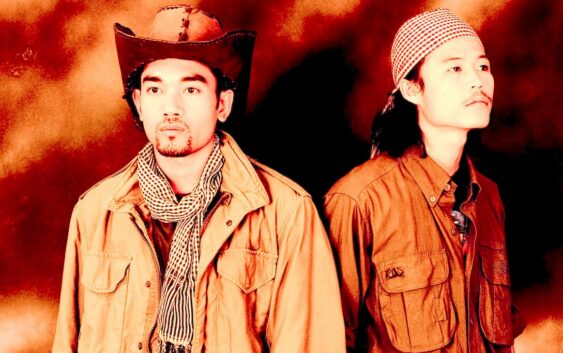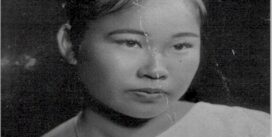LEGACY: RECLAIMING LAND AND FUTURE

In the lush, green hills of Laos, where rice paddies stretch endlessly under a vast azure sky, life carries on as it has for centuries. But beneath the surface—both literally and figuratively—lies a haunting legacy that refuses to fade: unexploded ordnance (UXO). Decades after the war ended, these remnants of destruction continue to claim lives, shatter families, and poison the land.
The Farmer’s Son
Keo was only eight years old when he first heard the stories about “the metal monsters.” His father, an aging farmer named Oad, would sit by the fire at night, his weathered hands trembling slightly as he spoke in hushed tones. The words were always the same: warnings about the fields they worked so hard to cultivate—the very soil that fed their family—and the invisible danger lurking just below the surface.
“They came from the sky,” Oad would say, his voice heavy with sorrow. “Bombs dropped like rain, not because we were soldiers or enemies, but because someone far away decided our homes deserved oblivion.” He paused, staring into the flickering flames. “And now, even though the war is over, the killing hasn’t stopped.”
Keo didn’t fully understand what his father meant until one fateful morning. As he followed Oad into the fields, carrying a bamboo basket slung across his shoulder, something caught Keo’s eye—a shiny object half-buried in the dirt. Curious, he bent down to pick it up, its metallic gleam promising treasure or perhaps a tool left behind by another villager.
“Keo! No!” Oad shouted, but it was too late. A deafening explosion tore through the quiet dawn, sending shockwaves rippling through the air. When the dust settled, Keo lay motionless on the ground, his small body broken beyond repair. Oad cradled his son in his arms, tears streaming down his face as he screamed into the empty fields.
That day, Keo became one more name etched onto the long list of UXO victims—a grim tally that grows each year despite the decades that have passed since the bombs fell.
A Mother’s Plea
Noy still dreams of her daughter, Phet, who was taken five years ago. She was sixteen then, full of laughter and dreams of becoming a teacher. One afternoon, while gathering firewood near the edge of their village, Phet stumbled upon what she thought was a harmless canister. It exploded before she could react, leaving nothing but silence in its wake.
Every night, Noy lights incense outside her modest wooden home, whispering prayers to ancestors she hopes are listening. Her heart aches not just for Phet, but for all the children stolen by the war’s cruel aftermath. “Why?” she asks aloud, her voice breaking. “We did nothing wrong. We were farmers, mothers, fathers, sons, daughters—ordinary people trying to live. Why did they bring this horror here?”
Her question echoes across the valleys, unanswered. The bombs remain, scattered like ghosts throughout the countryside, waiting patiently for their next victim. They don’t discriminate; they take indiscriminately—men, women, children, livestock, futures.
The Legacy of Fear
For many in Laos, fear is woven into the fabric of daily life. Farmers hesitate before planting seeds, knowing that turning the earth could awaken death. Children are taught never to touch strange objects, yet curiosity often outweighs caution. Entire communities live in the shadow of a war they never asked for, haunted by weapons designed to destroy but instead condemned to linger.
Older generations bear scars both visible and hidden. Some lost limbs clearing fields; others lost loved ones to sudden blasts. Younger generations inherit this trauma, growing up in a world where danger hides beneath every step. Schools teach lessons about UXO safety alongside reading and math, a grim reminder of the realities faced by Laotian youth.
Yet amidst the pain, there is resilience. Villagers work together to clear their lands, inch by painstaking inch, hoping to reclaim their fields and their futures. Aid workers arrive from distant lands, armed with metal detectors and determination, striving to undo some small part of the damage done. But progress is slow, and resources are scarce. For every bomb removed, countless others remain buried, ticking time bombs waiting to strike.
A Cry for Justice
At a community meeting held under the shade of an ancient banyan tree, an elder named Sysaengthong stood to speak. His voice trembled with emotion as he addressed the crowd. “Decades have passed,” he said, “and still, our people suffer. Still, our children die. This is not our war. These bombs are not ours. Whoever created this chaos must come back. Whoever scattered this poison across our land must clean it up.”
His words resonated deeply, igniting murmurs of agreement among those gathered. Someone began to chant softly, “Take them back! Clean it up!” Others joined in, their voices rising like a storm until the entire village echoed with the refrain. It was a plea born of desperation, anger, and grief—a cry for justice that had gone unanswered for far too long.
But deep down, they knew the likelihood of such accountability was slim. Those responsible for the bombings lived far away, insulated from the consequences of their actions. To them, Laos might be little more than a footnote in history books—a place bombed into oblivion during a war most have forgotten. But for the people of Laos, the war is not over. It continues, one explosion at a time.
Hope Amidst Ruins
Despite everything, hope persists. In villages like Keo’s, survivors gather to share stories, mourn losses, and celebrate victories—no matter how small. Each cleared field is a triumph. Each child educated about UXO safety is a life potentially saved. And each foreign volunteer who comes to help is a reminder that humanity still exists, even in the face of overwhelming despair.
Oad returned to his fields after burying Keo, though his heart felt heavier with every step. Yet he kept working, driven by a stubborn refusal to let the bombs win. “This is my land,” he muttered to himself as he tilled the soil. “It will feed us, not kill us.”
And perhaps, someday, the fields of Laos will once again belong solely to those who tend them—not to the ghosts of wars past. Until then, the people endure, clinging to hope as fiercely as they cling to life itself.

